#parisian architect
Photo

Charlotte Perriand
#charlotte perriand#cassina#1970#lc7 chair#lc7#le corbusier#parisian architect#french architect#french architecture#bauhaus#bauhaus design#bauhaus essentials#bauhaus movement#bauhaus furniture#lovefrenchisbetter
35 notes
·
View notes
Text

#photography#street photography#street#nikon#nikon photography#parisian#paris#urbanlife#urban life#urban photography#urban landscape#urban#arcitecture#contemporary architecture#residential#modern architecture#residential area#residential architects#residential architecture
2 notes
·
View notes
Photo

Unreachable Exterior #13659
#unreachable exterior#exterior#exteriors#Architecture#france#french architecture#architect#classic#paris#parisian architecture
18 notes
·
View notes
Photo
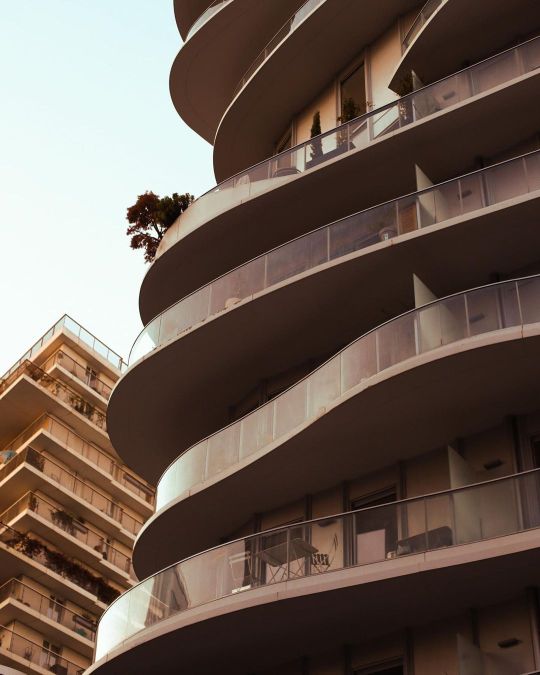
ARCHI Paris - Paris au coucher de soleil . . . #architecturelovers#architectureporn#archiporn#architect#archilovers_paris#ig_france#paris#parismaville#parisian#topparisphoto#huntgramarchitecture#huntgram#photo#photography#photographer#architecturephotography#photooftheday#lightroom#canon#eosr#archidaily#archigram#archilife#building#buildingphotography#buildinglovers#buildingdesign#pontcardinet #tower @canonfrance @canon_photos (à Paris, France) https://www.instagram.com/p/Chb9uGpLL_D/?igshid=NGJjMDIxMWI=
#architecturelovers#architectureporn#archiporn#architect#archilovers_paris#ig_france#paris#parismaville#parisian#topparisphoto#huntgramarchitecture#huntgram#photo#photography#photographer#architecturephotography#photooftheday#lightroom#canon#eosr#archidaily#archigram#archilife#building#buildingphotography#buildinglovers#buildingdesign#pontcardinet#tower
2 notes
·
View notes
Text


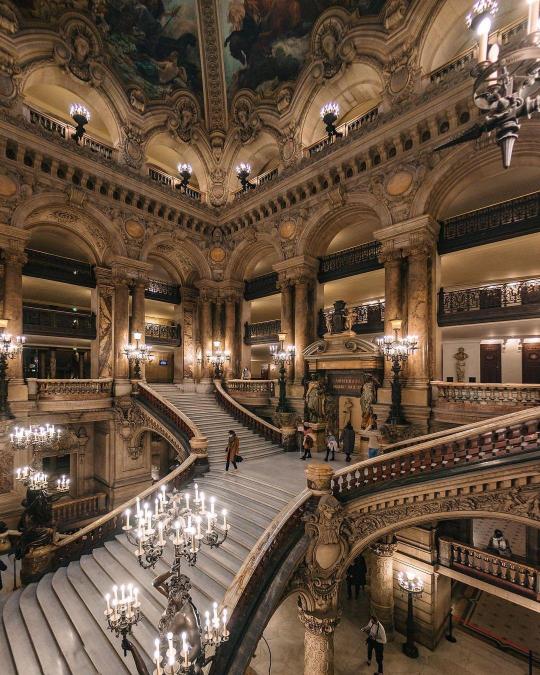




The Opera Garnier, is a renowned opera house in Paris, France. Designed by the architect Charles Garnier, it is a masterpiece of Second Empire architecture and was inaugurated in 1875. The Opera Garnier is celebrated for its opulent and ornate interiors, including the famous grand staircase, chandeliers, and Marc Chagall-painted ceiling. It continues to host ballet and opera performances and is an iconic symbol of Parisian cultural heritage.
📸: Andrea Perotta, Constance de Tourniel
#dark academia#light academia#classical#academia aesthetic#escapism#academia#books and libraries#classic literature#books#architecture#interior#design#old#historical#building#history#opera garnier#paris#france#second empire#1800s#19th century#royal core#cottage core#aesthetics#mood#vibe#tumblr#beautiful
2K notes
·
View notes
Text
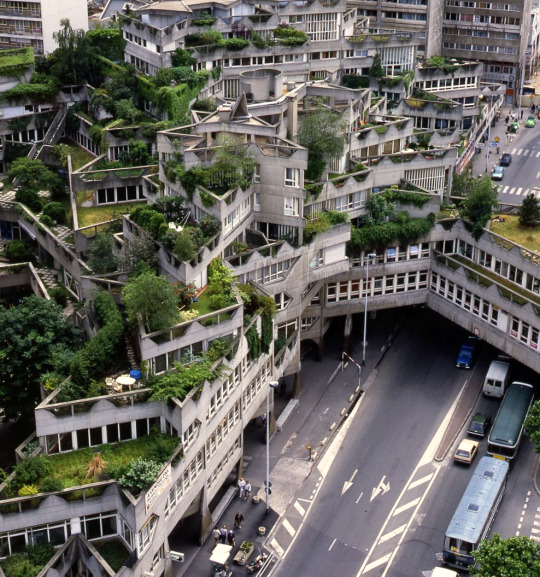
Les Étoiles d’Ivry, Renée Gailhoustet and Jean Renaudie, 1975
THE HUNGER GAMES: MOCKINGJAY PART II (2015)
This site was the second Parisian housing complex to feature in the film, with Ricardo Bofill's Espaces Abraxas playing a larger role. None of the architects responsible would have envisaged their work as it was cast here: as residences for a facist elite. On the contrary, both projects provided social housing, and sought, in their own way, to redefine what that type of building could be architecturally. Bofill hoped to elevate the lives of residents by transplanting a language of perceived grandeur, monumentality and luxury into the arena of low income residences. And Gailhoustet and Jean Renaudie wanted to break free of the bland monotony of characterless, cookie cutter units which often characterised social housing. Photo (cropped) by Robert Doisneau
#Les Étoiles d’Ivry#Renée Gailhoustet#Jean Renaudie#brutalism#architecture#eco brutalism#the hunger games#paris#social housing
157 notes
·
View notes
Text
+30 CC-FREE LOTS FOR BRITECHESTER

I don’t know if it happens to you - but I often find myself with a sudden urge to rebuild worlds - Even though I’m the worst sim-builder and sim-decorator in the whole history of Sims 😋 And in my quest for lots there’s one thing that stresses me out all the time: where will the builds fit in the map?! 🤯 Therefore, I have been creating some personal lists with favourite lots and I thought why not sharing them with you too!
Below I leave a list of my absolute-favourite cc-free lots for Britechester (and their respective location in the map). A selection of builds made by amazing and astonishingly creative architect simmers. Thank you all for sharing your builds with us!

1 - Larry's Lagoon 40x30
Foxbury Lots-In-Commons (University Housing) by Cerrydd
Foxbury Commons (Foxbury Commons) by Mini Simmer
Foxbury Student Union (Foxbury Commons) by Kriint
2 - Maritime Manor 30x20
FoxD-gn (University Housing) by @helgatisha
Foxbury Housing (University Housing) by @Lazysimie
3 - Briny Tower 30x20
Foxbury Tower Dorm Right (University Housing) by jasonsterlingmrc
4 - Tidal Tower 30x20
Foxbury Tower Dorm Left (University Housing) by jasonsterlingrmc
5 - Laurel Library 50x40
St. Laurel Library (Library) by @awingedllama
6 - Pepper's Pub 20x20
His Lordship's Dinner Ale (Bar) by @moonlightowl-es
The Pub of Britechester (Bar) by @simnematographygj
Parisian Apartments + Coffee Shop (Residential/Retail) by Milgemilge
7 - Spring Steppes 20x15
London Townhouse (Residential) by @theseptembersim
Brook Townhouse (Residential) by @xogerardine
London Townhouse (Residential) by @xogerardine
Britechester Townhouses (Residential) by @juliafilms
Study in Britechester (Residential) by Moniamay72
8 - Mossy Lane 20x15
Wisteria London Townhouse (University Housing)by @theseptembersim
Campbell Townhouse (Residential) by @xogerardine
Autumn Townhouse (Residential) by @plantsimgirl
Britechester Bakery (Retail) by @simpaera
Mossy Lane Reno (Residential) by DoctorSimCraft
9 - Honeydew Fields 20x15
Allen Townhouse (Residential) by @xogerardine
Honeydew Fields (Residential/Cafe) by @helgatisha
UBrite Housing (University Housing) by xandralynn
Gibbs Hill Housing (University Housing) by Xandralynn
Classic Apartments (Residential) by plumbobkingdom
10 - Drake Hall 30x20
Wyrm Hall (University Housing) by @caelhinn
Britechester Student Hall (University Housing) by @96langerlui99
Drake Hall (University Housing) by @helgatisha
University Dorm (University Housing) by @juliafilms
Georgian House (Residential) by @theseptembersim
11 - Darby's Den 30x20
Darby's Den (UBrite Commons) by @juliafilms
UBrite Commons (UBrite Coomons) by MissSimReno
Student Center (UBrite Commons) by Xandralynn
12 - Wyrven Hall 30x20
Hydra Hall (University Housing) by @caelhinn
Wyrven Hall (University Housing) by @helgatisha
13 - Darkwing House 30x20
Darkwing House (University Housing) by @rebouks
Darkwing House (University Housing) by @awingedllama
Drake Dormitory (University Housing) by melapples
Simpha Sorority House (University Housing) by Mini Simmer
183 notes
·
View notes
Text
At the inauguration of the First Brazilian Congress of Eugenics in July of 1929, the physician and anthropologist Edgar Roquette-Pinto [...] exalted “eugenia” as the new science that, together with medicine and hygiene, would guarantee the efficiency and perfection of the race. [...] [This] agenda [...] brought architecture to the very core of the eugenics [...] movement [...]. [M]edical scientific discourses, first articulated in France, crossed the ocean [...]. [G]lobal movements, hygienics and eugenics, [...] became the dual vehicles for bringing architecture into active dialogue [...].
In Brazil, the nation was seen as a sick organism [...]. In the center of Rio de Janeiro, this mission brought together a diverse cast of characters: from the physicians and architects of the Parisian Musée Social, the early French think-tank [...], to the physicians and architects of Rio de Janeiro who formulated [...] Brazilian modernism, to Le Corbusier, who began consolidating a eugenicist ideology precisely during the months he spent in Brazil in the mid-1930s.
---
In the early 1920s, [...] a dramatic event occurred in Rio. [...] [A] sanitary and urban reform [...] reached its climax with the demolition of an entire populated mountain, the Morro do Castelo, in the center of the Brazilian capital. This mountain was no ordinary mountain; it was the original site where the colonial city [...] had been established in 1567. [...] As far back as 1798, a medical report had argued for the mountain’s demolition [...]. [T]he mountain came to be seen as the very negation of modernity itself; a reservoir of vice and disease with a motley “marginal” population, including poor Blacks and formerly enslaved people who, according to the elites, invaded the center of the city [...].
The extensive territory that resulted from this demolition was immediately occupied by the 1922 International Exhibition. [...] Promoting itself as a tabula rasa, the exhibition represented a literal “triumph” over the territory -- a territory now cleansed of its history and unwanted inhabitants. It’s more than 500-page catalog is striking in its complete elimination of all traces of the African and indigenous components of Brazilian culture. [...] Its images demonstrate a new alliance between beauty, health, tropicality, and modernization that Brazilian elites adopted [...].
Shortly after the exhibition, in 1922, and lasting until 1938, neo-colonial architecture was declared by the government to be the national style, mandatory for every building that would represent Brazil abroad. [...] It was not a coincidence that all this -- the demolition of the mountain, the elimination of Rio de Janeiro’s original urban nucleus, the displacement of its poor residents, and the construction of the exhibition pavilions -- was executed almost simultaneously with new policies and mandates such as the “white only” decree of 1921, which prohibited the immigration of Blacks to Brazil. [...] No one illustrates this connection between race and architecture better than Lucio Costa [the architect of Brasilia, the new modernist national capital city] —who, in 1928, made this racist link in a newspaper article: [...] All architecture is a question of race. [...] Everything is a function of race. If the breed is good, and the government is good, the architecture will be good. Talk, discuss, gesticulate: our basic problem is selective immigration; the rest is secondary [...].
---
When Le Corbusier traveled for the second time to Brazil in 1936, his discourses were centered on nature, death, and the racial and sexual “other.” [...] In 1936, while preparing his series of talks in Rio de Janeiro, Le Corbusier made a sketch on a piece of cardboard that distilled and concretized [...] rationales of modernity: change the environment, change the man. Written at the top is the word “Castello,” followed by the name “Lucio Costa,” the phrases “pedro aller police” and “Castello coûts clichés,” the name of architect “Carlos Porto,” and the phrase “Acheter livre Carrel.” The latter was a reminder for him to buy the new bestseller by the French Nobel prize-winning physician Alexis Carrel, Man The Unknown, an unmistakable call for the implementation of eugenics and manifesto for white supremacy. What made Le Corbusier think of Carrel while thinking of Rio de Janeiro?
It is not a mere coincidence that Castelo, one of the most significant eugenic laboratories in Latin America, is the first word that appears on the cardboard.
But Castelo was not only the name of the pulverized mountain from which thousands of “undesirable” inhabitants had been displaced, or the stage for the 1922 international exhibition with its neocolonial pavilions and its image of white Brazil, or the epicenter of the master urban plan that Agache had designed for Rio. Castello was also where Lucio Costa was designing the new building for the Ministry of Health and Education, the institution charged with developing and enforcing Brazil’s eugenic policies under Getulio Vargas’ new authoritarian regime, for which Le Corbusier had been invited to be a design consultant. This sketch links the dramatic transformation of the urban territory of Rio de Janeiro to Lucio Costa’s project and to Carrel’s vision for remaking society. [...]
In his Oeuvre complète 1934-1938, Le Corbusier included a sketch of the Brazilian Ministry of Health and Education building. This new ministry [...] later became the symbol of Brazilian modernism [...]. Gustavo Capanema, the first Minister of Health and Education, had commissioned both the building, which he called the Ministry of Man and was destined to “prepare, compose, and perfect the Brazilian man,” [...]. Capanema pondered, “How will the body of the Brazilian man be, of the future Brazilian man, not the vulgar man or the inferior man but the best exemplar of the race? How will his head be? His color? The shape of his face? His physiognomy?” [...] When Le Corbusier came back [from Brazil] to France and began collaborating with Alexis Carrell under the [Nazi] Vichy regime, his vision of a clinically inspired habitat where all human needs can be met reached a new level of specificity. [...] He was convinced that the human body, the anatomo-politics of its productivity, and the built environment should be managed by the State. In a 1941 broadcast he affirmed that "[...] The degeneration of the house, the degeneration of the family, are one."
---
All text above by: Fabiola López-Durán. "Fantasies of Whiteness". e-flux Architecture. Sick Architecture series. April 2022. [Bold emphasis and some paragraph breaks/contractions added by me. Presented here for criticism, teaching, commentary purposes.]
93 notes
·
View notes
Photo
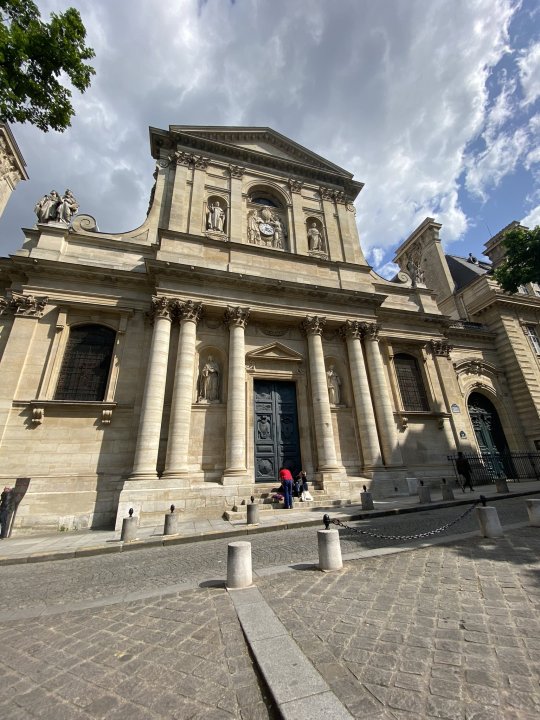
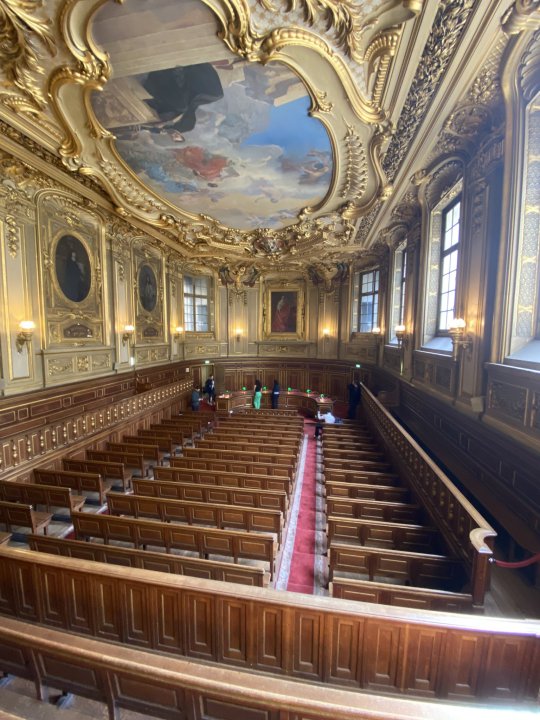

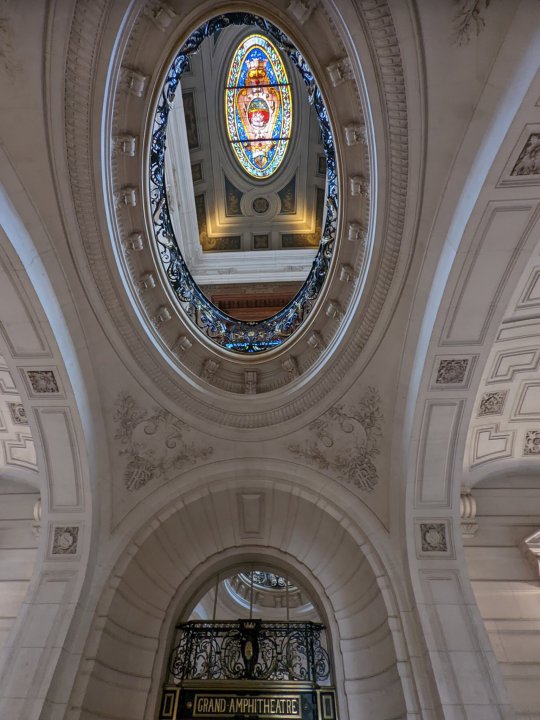
Without defending the citadel of the mind, how can we build a beautiful city? Without the conviction of true propositions, whence do we think beauty will come?
- Sir Roger Scruton
La Sorbonne was named for its founder, Robert de Sorbon, chaplain and confessor of Louis IX. The history of the institution has always been closely linked with that of the University of Paris, one of the most important medieval universities of the French capital. Throughout the centuries, la Sorbonne became and remained a prestigious symbol of the university, training and teaching many of the great philosophers and masters of theology and history.
The University of Paris opened its doors in the 13th century. It was formed from a conglomeration of all of the colleges of the city's left bank. It was here that training occurred for all of Paris' clergy, administrators of royal institutions (courts of audit, courts, parliament, the council of state), as well as agents of ecclesiastical institutions ((bishops, abbots, education and hospital agents). Young students of the Four Nations at the time (French, Normandy, Picardy and English) came there to study law, medicine, theology and the arts. Thus, the University enjoyed unmatched prestige and international renown.
In 1253, Robert de Sorbon opened his school on the Parisian Mountain, Sainte-Geneviève. The institution was primarily meant to train the poorest students (like many other colleges on the hill), but soon the Collège de Sorbon acquired a reputation, gradually becoming the famous theological faculty La Sorbonne .
The 17th century brought change. In an effort to bring new life to the old buildings, Cardinal Duc de Richelieu appointed architect Jacques Lemercier to undertake updates to the Sorbonne's structures. Cardinal Richelieu was very involved in the life of the Sorbonne and would go on to become headmaster in 1622.
The turmoil of the French Revolution would force the doors of the Sorbonne to close for a time. Starting in 1801 the Sorbonne housed simple artist workshops. During the Restoration, Louis XVIII decided to restore the buildings of the Sorbonne to their original purpose: education. In 1821, the Paris Academy and the École des Chartes (which trained students in archival conservation and preserving written heritage) took possession of the Sorbonne.
#scruton#roger scruton#quote#la sorbonne#université#university#paris#beauty#architecture#design#citadel#learning#education#france
64 notes
·
View notes
Text
The Parisian Agenda


Pairing: Tony Stark x female reader (no other specifications!)
Word Count: 2030 words
Outline: Tony flies you out to Europe for a big weekend surprise.
Author's Note: requested here. I wanted to write a paris fic for a while now so I combined my desire with this request and voila. Pure romance!
Warnings: swearing, pet names, p in v sex, dry humping, heavy kissing, scratching.
P.S: dividers by @firefly-graphics // banners by @maysdigitalarts
Main Masterlist ・❥・Tony Stark Masterlist
NSFW UNDERNEATH THE CUT. MINORS DNI.

“We didn’t have to take the jet.” You mumble shifting around in your seat and looking at your boyfriend, the multi-billionaire Tony Stark.
“Don’t worry, it has high-quality reusable energy and is non-harmful to the planet.” He winks at you as he is handing you a glass of orange juice. “Now drink. I need you to have all of your strength for tonight.”
“Tony Stark. You better not have pulled out this jet just to fuck me overlooking some old ass monument.”
“I promise I haven’t.”
“Boy, do I not believe you.” Oh, he had pulled that shit before. Multiple times.
You raise an eyebrow as he clinks his glass with yours, a very mischievous smirk behind his little goatee. He drinks his orange juice like is the most natural thing and then he brings out a silver plate filled with different kinds of cut fruits. He begins to feed you piece after piece while talking about a near grand opening that will take place in the Parisian office.
Yet Tony remains coy about the place you are landing as he muses between the European offices and tells you about how he should open one in Marocco.
~Several hours later.
When you land you are fast asleep and Tony quietly tries to escort you in his arms careful not to wake you. Of course, that doesn’t happen. When you open your eyes you are in his arms overlooking the city night lights.
“Where are we?”
“Somewhere where you will take a shower and dress very pretty so we can go to dinner.”
“Oh, Tony.” You roll your eyes and adjust yourself on the ground recognizing you must be on the rooftop of a hotel.
The hotel room is beautiful, wide open, with marble pillars and many statues inside.
“Are we in Rome?” You ask him, touching gently the statues.
“Nope.”
“Athens?”
“No.” He shakes his head as he begins to undress.
“You better not be lying.”
“Plenty of cities in Europe. Think the architect was just obsessed with statues.”
He reaches out for your arm burying his beard and nose on your shoulder as he begins to bite and drags you towards the bathroom mumbling that he won’t shower alone.
After an eventful and steamy shower, he lets you dress on his own claiming he needs to overlook some key details and someone will be outside the door to escort you.
He has left three different dresses on the bed, in different lengths and cuts, and colors. Different pairs of shoes are also on the chair waiting for you. Everything looked very elegant, but of course, they were all completely backless. You pick the one you prefer the most, feeling like a princess in it, and then sit down in the vanity parlor to do your hair and make-up. Once you are satisfied with yourself, you walk towards the rest of the suite reaching the dining room. There you find a big blue velvet box with a note on it telling you to open it.
It was a beautiful opaque necklace. Extravagant and expensive. Tony loved his jewelry that much was true. You carefully put it on and headed towards the door. You feel a little weird walking out with no purse so you hold on to your phone carefully breathing in and out.
Behind the door a young busboy greets you and you can immediately tell where you are from his distinct accent.
France.
Or maybe any other french speaking country.
You walk behind him as he points you to a candlelight passage overlooking the…
“Paris.” You breathe out, looking at the Eiffel tower from a close distance.
“Son of a bitch. I should have known.” You huff and walk a little bit more detrimentally on the footpath till you see him. Dressed in his black tuxedo with a wide grin on his face.
“My lady.” He extends his right arm, placing his left behind his back and slightly bowing to you.
“I feel like I should have known.”
“My mom’s favorite city.” Tony smiles and there’s a glisten in his eyes.
“Oh, I didn’t know that.” You smile back and squeeze his hand.
“Yes, when my father proposed to her, he also gifted her the Paris office. Quite beautiful overlooks half of Paris.” You follow his movements, listening to him talking. It was rare when he spoke of his parents like that especially his mother so you no longer feel the need to tease him. He pulls the chair for you, sitting on a small table close to the banisters.
“Is absolutely beautiful, Tony. Thank you.”
“Oh, wow, and I haven’t even fed you yet.”
“Tony.” You scoff as he is opening a champagne bottle and pouring the insides on two flute glasses.
“You look absolutely ravishing, has anybody ever told you that?” He proclaims, holding the glass in his hand, taking in your figure.
“Only you, every single hour of my life.”
“Smart man.”
“Only the best.”
“A toast then.” He smirks bringing his glass forward. You repeat his action hovering yours close to his.
“To health. And world peace.”
“I love world peace.”
“Oh, I know.”
“I also love you.”
“I also know. I love you too.”
“Good.”
He clinks his glass and proceeds to take a sip staring at you as you are drinking yours. Truth is Tony was always in a flirty mood, especially in semi-public settings like this but something felt vulnerable and raw about tonight as if something hang in the air. You try to push it in the back of your head, Tony wasn’t the most open man in the world, he required a lot of patience and care.
Then dinner is served.
Opting to skip appetizers, you start with thins strip of smoked salmon with sour cream, lemon, and dill with a side of ravioli and mushrooms with herbs and parmesan. A salad in the middle for the pair of you, a mix of lettuces with pomengrate seeds. Then for the main dish, there is cod, simply cooked with spicy herbs sided with white rice and black truffles.
Conversation flew as Tony seemed to feel like retelling you his parent’s engagement journey. Apparently, his dad had first wanted to propose in Marocco, overlooking the dessert and some old palaces but unfortunately, there was a warning for very bad weather and then the trip had to be cut short cause of other business problems. In the end, he simply took her to the Jules Verne restaurant in Paris, overlooking the seine river, and proposed to her over dinner.
“Does that restaurant still operate?” You ask him taking a sip of your wine.
“Yes, it does.” He grins, almost wondering how clueless could you be.
Then the waiter is coming around with the dessert of the night. Placed it in the middle of the table having already cleared it before. A chestnut puff pastry with vanilla cream, citrus zest, and opaline. He takes the knife and the fork in his hands and begins to cut a piece, and that’s when you first notice it.
A diamond shining right against your face.
“Oh, they left something in there.”
“Funny how that happens, huh?”
“No, you can’t see, is on my side.” You protest reaching out to take the knife from his hand and fumble with a pastry a little.
“Maybe they dropped their spoon inside the mix.” Tony deadpans, a smirk trying so very hard to hide in the curls of his lips.
“It looks…” You pull it out and examine it. “Looks like a ring.”
“That it does.” He looks at you waiting for the clue to drop in.
“Why would they put a ring inside the pastry?”
“Funny how the mind of the average man works.”
“Tony. Is it?”
“I mean it definitely is, isn’t it?”
“Oh my god.”
“Bout time.”
You take the ring in your hands examining it around and pushing away a couple of crumbs. The design is simple and very elegant with a heart-shaped pink diamond in the middle, and several smaller diamonds adorning the silver band.
“Will you marry me, y/n?” Tony asks looking at you.
“Yes, yes!” You exclaim and fall forward to reach for him.
Then it all feels like a blur, a multitude of emotions overwhelming you. You don’t remember when you put on the ring or if you ever ate that pastry, all you know now is Tony breathing above you as he is railing you against the mattress.
Slowly and sensually as if he is sealing a promise and eternity altogether.
Your hands move on his back, your nails digging deep into his back, feeling his muscles move under your touch. The feeling of your engagement ring on his back has him acting up, looking at you with love and devotion and absolute possession.
“I love you.” He breathes out, his hands cupping your face. “I love you so goddamn much.”
“I love you, baby.” You pant out, his hands reaching out to your thighs to push your dress further up for final access.
“I will never let you go. Never, ever, ever.” The palm of his hand brush on your wet panties and you hiss at the sensation. Everything feels so electrifying right now. He pushes them to the side and quickly replaces the empty feeling of his touch with the tip of his cock.
“Forever.” He muses pushing it inside as your mouth hangs open with the feeling of him. It feels desperate and raw and absolutely right. You need him, you need to show him how much. Your nails dig in on his back as he moves his hips rhythmically against your frame, his face one inch away from your face.
“I wanna see you. You’re so beautiful. A goddamn dream of a woman. My one and everything. My life and my heart and everything precious and holy in this world.”
Thrust followed by another thrust until his cock reaches for your cervix and you try your hardest to hold on to him as he is working your body better than ever.
He wants to show you how much he loves you, how much he cares for you, and how sure he is of his decision to make you his wife. His hand keeps your chin secure, as you try to hit your head back in pleasure and he is drawing orgasm after orgasm from you, never stopping looking at you.
“You are the best. Better than anyone else.”
“I need to, I need to.”
“I know, I know. I got you. Come on, give it to me. Show me. Show me how you love me. ”
You moan out his name loud and clear for anyone to hear and your orgasm vibrates through your whole body. Doesn’t take long for him to cum as well, filling you up and thanking you over and over again for choosing him.
Ten minutes later, and several kisses later he is railing you again, never stopping looking at your eyes, kissing your lips and your neck when you are cumming again. He doesn’t stop though.
You don’t know how many rounds it has been or if you had slept for more than a few hours but you know that is night again as the lights from the outside are shining brightly while you are sitting on the balcony chair dressed in your bathrobe and admiring the way your ring glistens in the dark.
“Happy?” His voice comes from behind you, followed by a kiss on your shoulder and then one on top of your ring before he settles a tray of food on the small table.
“Very.” You grin looking at him with love and utter devotion.
“You make me very happy.” He nods his head taking in your serene figure.
“I could make you very sad, too.” You tease him, winking at him.
“You could never.”
“Hm. Don’t be so sure.”
He laughs and shakes his head. “Alright. Whatever you say.”
“When are we returning home?”
“Never if I can help it.”
“I like that.” You smirk and pick up a piece of chocolate truffle to throw inside your mouth.

for updates please follow @fluffyprettykittylibrary and turn on post notifications!
#selenewrites#tony stark#tony stark x reader#tony stark fluff#tony stark smut#tony stark one shot#iron man#iron man x you#iron man x reader#iron man smut#iron man x y/n#iron man fanfiction#tony stark x you#tony stark imagine#tony x reader#tony stark fanfiction#tony stark fic#tony stark x y/n#tony stark x fem!reader#tony stark mcu
233 notes
·
View notes
Text
The Poet Who Lost His Writing Hand in The Battle of Champagne

No war has been fought by more poets and artists than the First World War and no war has taken a higher toll on its intellectuals. Few live long enough to see their poetry in print and those who did, all came back wounded from the trenches. One of the survivors was the Swiss modernist and futurist writer and poet Blaise Cendrars. He joined the 3rd Foreign Legion March Regiment in August 1914. Here he became a comrade of Eugene Bullard, one of the three American protagonists of my new book - Fighting for The French Foreign Legion.
Cendrars was an outstanding artistic adventurer constantly seeking new ways of expression in the 20th century, an Elon Musk of writing in his time. But on the first day of mobilisation in August 1914, Cendrars wrote an open letter under the headline “L’heure est grave” in which he urged all friends of France to join the army and fight oppression. The modernist artist stressed that in this dark moment there was no need for words, only action. The letter was published in leading French newspapers and signed by him and 16 other foreign intellectuals, and it is not least because of this letter that thousands of artists living in Paris volunteered to fight in the war without knowing anything about the horrors awaiting them.
At first, Cendras was annoyed that he as a volunteer had to serve in the Foreign Legion and not in the regular French Army, but soon he forgot that and called it with pride “The First Parisian Regiment”:
“We young brainless, enthusiastic or indolent students, poets, painters, journalists, writers, actors, artists of cinema or circus, sons of bankers, manufacturers, engineers, famous architects or workers: hairdresser, tailors, leather worker, upholsterer, bookbinder, shoemaker; or funny or gigolos, restaurant hunters, waiters, hotel employees, nightclub musicians, street sellers, hucksters, anarchists, socialists, revolutionaries, rentiers, race drivers, boxers, gamblers, aviators, night owls, party goers, amateurs, dilettantes, dancers; Montmartrois, Boulevardiers, Montparnos, jokers and pranksters, imposters who made up our 3rd Foreign Legion March Regiment, the most Parisian of all French army regiments, and the most intellectual of all, in short a luxury regiment”
The 3rd Foreign Legion March Regiment had enough artistic talent and innovative thinking to form the avantgarde of the 20th Century - and to some extend it did. But it came with a horrible price. At the Battle of Champagne on 25 September 1915 Blaise Cendrars had his right arm shot off - his writing hand - and he was invalided out of the army. His comrade, a Polish avantgarde painter Moïse Kisling, was wounded several times in the breast at the Battle of Artois a few months earlier and he was similarly sent home. Kisling had a studio in Paris close to Les Jardin de Luxembourg where he allowed friends to sleep over when in town, amongst them one of the heros of my book: Eugene Bullard.
In 1916 Kisling and Cendras collaborated on a book with the title ”La Guerre au Luxembourg”. One thousand copies were printed of this book, which described the horror of the war through the eyes of the children playing in the Jardin de Luxembourg, which you could see from Kisling’s studio.
Cendrars is just one of the hundreds of people I present and describe in my book, and in the research and writing process I have realised how important they were. Europe today is standing on their shoulders.
33 notes
·
View notes
Photo

🏛️Living again the best neoclassical dream in Sweden - 📌 The great hall of Gunnebo Slott. This space stands out for its stately elegance, and for the richness in its walls and sculptures. This ones were made by Giocchino Frulli in 1786 and in this case the over door is an allegory to farming; the boiseries had all the attention by the main architect, remembering us to some Parisian private Hôtels. 🎵 Piano Concerto No. 22 in E♭ major, K. 482, 3rd movement - W.A. Mozart (1785). - #palace #admagazine #architecture #neoclassic #rococo #palacio #museums #gustavian #louisxvi #18thcentury (en Gunnebo Slott och Trädgårdar) https://www.instagram.com/p/CpLWHd0oFSf/?igshid=NGJjMDIxMWI=
81 notes
·
View notes
Text
Another fairytale park... Mirapolis (1)
We have been talking about Disney a lot - and of course, with Disney comes Disneyland. I have made reblogs aboutt the Efteling park (and maybe more posts shall come in the future). But today, I want to invite you to an amusement park that doesn't exist anymore, and yet remains a part of France's history, and a part of the history of French folklore and fairytales. This is... the defunct amusement park Mirapolis.
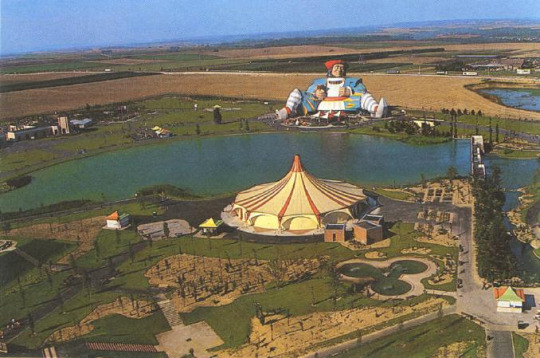
Mirapolis was opened on the 20th of May 1987, in the city-group of Cergy-Pontoise (more specifically it belonged to the town of Courdimanches. It was a complicated situation as Cergy-Pontoise was one of the "new cities" built in the 60s/70s by sticking various existing small towns together as a way to deal with the population boom in the Ile-de-France region/Parisian area... Its the convoluted ways of French territory delimitation). It lasted for only five seasons, closing on the 20th of October 1991. The name of the park was explained as such by its creator, Anne Fourcade: "mira" is meant to evoke mirrors, the infinite, the eternal, while "polis" reminds of "the greatness of cities and of ancient kingdoms". It is thus meant to bring in people's minds ideas of adventure, of fabulous, and of future... Too bad the park didn't live up to its name and was a big failure.
The project of Mirapolis is tied to the arrival in Europe of Disney - more precisely, the appearance of the Euro Disney Resort (current "Disneyland Paris"). The Walt Disney Company was on our ground, the Americans against the Europeans, and Europe had to fight back. [Another complicated thing: Euro Disney Resort only offically opened in 1992, but the project existed and had been going on - though secretly - since 1976, and in december of 1985 it had been publically announced that France would be the country welcoming the first European Disney park.] Mirapolis was an attempt to create a counterpart to this American implantation: it was to be the greatest, largest and first French amusement park.

And large and great it was! Too great probably... Mirapolis was agreed to be an excessive project, truly bigger than life - a lot of resources were given to the project, and they didn't hesitate to consume every last drop of it and even more. The park was 55 hectars in terms of size - something unheard of in France until this point. Created by the collaboration of Anne Fourcade (architect and the creator of the park) and of Ghaith Pharaon (a wealthy businessman), the park's main problems were an ever-growing debt and a series of constantly changing owner and staff. The park was first owned by the Paris-Parc society - until the society went bankrupt. It then became the ownership of the Cergy-Parc society, and the original gestion and maintenance team was replaced by staff coming from the Club Med (the most famous French holiday-club/vacation-company ever), but THEN they were replaced by a group of carnies (carnies who funnily originally were against the project and had loudly expressed their opposition... but they still were hired and ran the park until it went bankrupt, and their presence made the park half-funfair). Because while the first year was a good year that met its mark (500 millions of francs invested, no loss), the second year started going flawly (700 millions of francs invested, 85 millions of loss), and then the third went bad (140 millions of loss) - and so on and so on until the park clearly wasn't profitable in any way anymore.
Now, why would this park be interesting for this blog? Because its themes was "French legends and French fairytales" - it was an amusement park entirely centered around French folklore! Again, since Mirapolis was about counter-attacking the "American invasion", it makes sense the park would be focused on glorifying the local heritage and culture, and proving that you could do a fully French park instead of having Disneyified verson of Perrault and Grimm's fairytales. A very admirable project... that unfortunately failed. Why? There's a big debate as to what was the exact cause (or causes, in plural) of this park's downfall - we'll get into this another time. But all in all, beyond being an amusement park trivia, and the background of current urbex explorations, the story of Mirapolis is one of the chapters of the massive wave and passion for amusement parks in France in the 80s-90s. Plus, the park still technically "lives on" as a lot of its attractions and elements are currently in use by other European amusement parks... But I'll get into the more historical details later.

For now let's focus on...
WHAT THE PARK LOOKED LIKE
The park was organized in eight zones, whose names were only fixed by the second year of the park's run. Each zone was a mix of rides and food-sources. When the park opened in 1987, there were only 20 attractions in total - but when the park closed, it had a fifty or so or them.
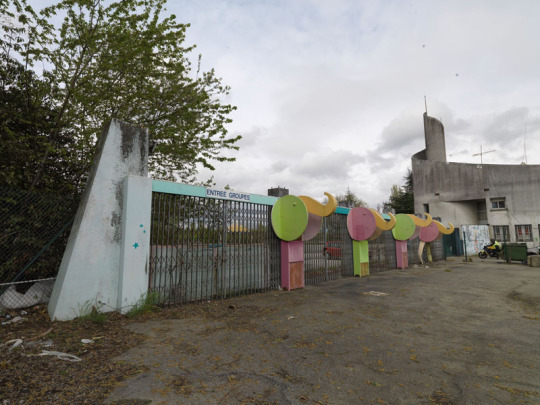
1 ) "La Grand'Place" (The Main Square/The Great Plaza)
This area was called "Le palais des merveilles", "The Palace of Wonders", during the park's first year. While it was renamed the "Grand'Place", the name "Palace of Wonders" was kept for the theater in the area - a building for theater plays, special-effects shows and other ballets that could welcome up to 800 people and have different shows playing simultaneously. In 1987, René-Louis Baron (a famous name of musical experiments in the 70s and 80s) created there a show based on La Fontaine's fables, called "Partir à point", with costumes by Yves Brunier. It was also within the Palace of Wonders theater that the first episodes of the "Juste Prix" (the French "The Price is Right") were recorded, between 1987 and 1988. In the second year, "Le Palais des Merveilles" became "Le Château des Visions" (The Castle of Visions), and became the first and only permanent 3D movie-theater of France - sponsored by Fujifilm, and decorated on the outside to look like a medieval castle.
Other buildings of the area included "Le théâtre de verdure" (The Greenery Theater), an open-air theater of 900 places ; and "La Navette aux milles sensations", a small-sized moving movie-theater that was carried across the area. Finally when the carnies arrived in 1989, they prepared a karting course there. The Grand'Place area was also where "La Grande Parade" (The Great Parade) was organized, a big parade with roughly 200 characters/costumes - among which many were the characters of La Fontaine's Fables.

2 ) Le jardin de la Belle Epoque (The garden of the Belle Epoque)
[For those of you not in the know, "La Belle Epoque", "The Beautiful Era", is the nickname of the era of French history located between the end of the 19th century and the First World War]
Located north-west of the park, The Garden of La Belle Epoque was originally called "Les Impressionnistes", in homage to the titular artistic movement/group. The three main attractions of the area were Le Ruisseau fleuri, les Tacots-Chapeaux and Le Manège de chevaux de bois. Le Ruisseau fleuri (The Flowery Stream) was a boat-travel in a canal surrounded by animated scenes based on impressionist paintings (it was renamed Rivière fleurie, Flowery river, in 1988). Le Manège de chevaux de bois (The wooden-horse carousel) was, as the title says, a carousel of fifty-four wooden horses - and it was renowned for being the first traditonal carousel created in France since 80 years... It was later moved to the "Land of Legends" when the carnies arrived. The third ride was the Tacots chapeaux (Hat-cars), little cars you could drive around which wore eyeglasses, mustaches and hats. There was also a fair-organ/band-organ playing music for the guests.
In 1988 new attractions were added - but clearly designed with a medieval theme, which clashed with the Belle Epoque one (for example there was "The Knights' Poney-Club", which was a medieval-theme poney-ride). Among the novelties there was a small maquette of the Port of Deauville, a faithful miniature reproduction in which children could drive around mechanical boats.
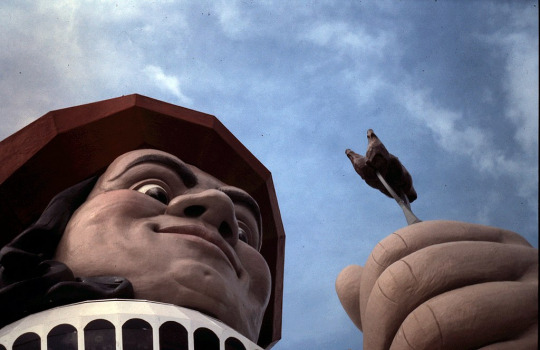
3 ) Le domaine du Moyen-Âge (The Middle-Ages domain/area)
North of the park, the Middle-Ages domain used to be called "Gargantua the giant", because its main attraction was the huge statue of Gargantua - it was a "scenic route in height". Basically you could climb inside the giant and look at the park from within him - this statue was considered to be part of the "duck architecture" (l'architecture canard) where buildings were made to look like objects or people (for example you could have a building looking like a giant picnic basket).
This area also contained a miniature train station where the park's train, the Mirapolis Express, went. In 1988 they created there "Le Chapiteau de l'épée magic" (The tent of the magic sword), where there was a laser show of medieval theme ; but it was moved to the Legend Land in 1989. Meanwhile, the same year, this medieval area was invested by most of the funfair and carnival-attractions and stands, brought by the carnies: there was a UFO ride (called... UFO) for 48 people ; La Pieuvre (an octopus-ride) ; La Chenille (a Music Express), a Buggy ride ; and "Godbille", a children carousel.

4 ) Le royaume de l'illusion (The Kingdom of Illusions)
Its original title was "The Castle of Spells" - because the titular castle was the main ride of the area. There was also a restaurant called "Les Sortilèges" (Spells, The Spells), and a building called "La tour de Léonard de Vinci" (Leonardo da Vinci's Tower). Within this tower, which was meant to recreate Leonardo's workshop, there was an animatronic show created by Pascal Pinteau: the show was about a painting of king François Ier suddenly coming to life and presenting to the audience Leonardo da Vinci, while making parallels between his inventions and modern day's technology. (There was also a "futuristic character" named Alpha apparently?). The special effects were overseen by Jacques Renoir (the great-grandchild of the painter Auguste Renoir), Leonardo da Vinci was voiced by Jean Topart, and Roger Carel made the voice of the other characters of the show. The animatronic of Leonardo da Vinci was renowned for being very complex and advanced - it was moved by three hundred different motors, which allowed for things such as the animatronic's eybrows to move to mimick emotions.
To the back of the Castle of Spells, there was a rollercoaster named "Le Dragon des sortilèges" (The Dragon of Spells) ; and north to the castle there was Le Labyrinthe - a two-hectar maze inspired by an actual labyrinth of the Middle-Ages. In 1988 a hot-air balloon ride was added.
Now you know how it goes: in 1989, as the park became half-carnival/funfair, a lot of carnival rides were added in the area: Le Grand Huit (Galaxi-type rollercoaster), "Télé Combat Avion" (a plane-themed ride), a ghost train "Geisterburg/Train Fantôme", a "Tagada" (a sort of horizontal platform with a bench all around it facing the inside, and the platform jumped and turned around) - and "Les Cygnes Blanc", a water-ride in swan-shaped boats (once Mirapolis was closed, it moved to the parc Saint-Paul, renowned the Pédalos cygnes).
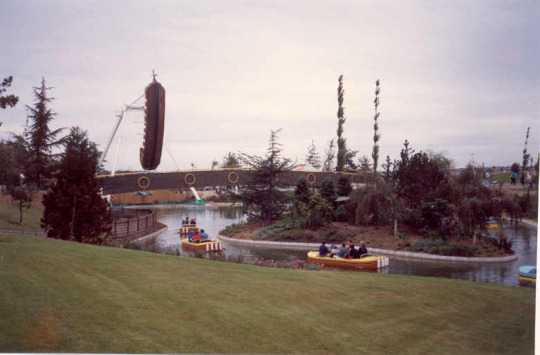
5 ) La terre de l'aventure (Adventure Land)
West of the park, it was originally called after its main attraction, "La descente des rapides" - going down the rapids of a river on 14 meters-logs (the ride was another spnsorship of Fujifilm). There was a lot of boats-and-water based rides: there was a "tow boat ride" called "La Rivière des Castors" - Beaver River. It took the guests on a water-ride onto thriteen boats, with the shores decorated by beaver figures. There was also a "balancing boat" ride, called "Le bateau pirate" (The Pirates' ship).
When the Club Med took over Mirapolis in 1988, a lot of attractions were added - twelve hot-air balloons ; an inflating castle (La Montagne molle), a gravitron-ride (Le Galion) and a "Bateau pirate junior".
But the most striking part of this area was the Nesquik sponsorized area. It was originally just one specific ride, the "Quick Cup" (also called "La Chocolatière de Groquik"), your usual spinning-cup ride, but with Groquik on the sides of all the cups. However in 1988, the "Groquik area" expended with three more children-rides: Le Mille-Pattes, Le Chemin des tortures (a kiddie train" shaped like turtles), and the Mini-dragons (a plane-jet-ride shaped like dragons - it survived the closure of Mirapolis by becoming the "Manège dragon" of the Parc Saint-Paul before being retired for good in 2009). If you are confused by my mention of "Groquik" let me explain: before Nesquik brought over in France its chocolate-colored bunny as a mascot, France had its own Nesquik mascot called "Groquik". Created in 1978, it was a big, jolly, large yellow hippopotamus with a straw hat (he also doubled as the Greek Nesquik mascot as "Kouikaras") ; but he got officially retired in 1990 because Nesquik realized having a big, fat mascot for their products could mean their products made children fat or obese... So he was replaced by the fit, trim and athletic Nesquik bunny.
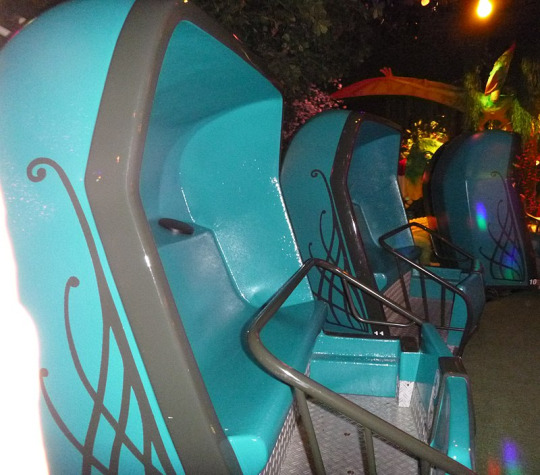
6 ) Le Pays des Légendes (Legend Land/ Legend Country)
Its original name was "La ville d'Ys", "The Town of Ys" - once again, because it was the title of the main ride, The City of Ys. [When the name Land of Legends was brought, the attraction became "Voyage sous la mer", "Travel under the sea"]. It was an omnimover scenic-ride that went fourteen meters down below the earth, and made the guests explore the legendary city of Ys - this fabulous lost city of Bretagne supposed to have sunk below the waves. The SFP society designed the monsters and animatronics encountered during this ride, from gigantic invertebrate to a ten-heads hydra. And of course, Dahut was there too - princess, witch and mermaid all at once!
There was an area called "La forêt de Brocéliande" (Broceliand forest), which contained a replica of the Round Table, and a "potager des fées" (The fairies' vegetable garden). There was a lake, and on its shore a tent - a large circus tent that actually welcomed the shows of Annie Fratellini (one of the most famous female clowns). Annie Fratellini also had there a "circus school", that presented to the guests the story of clowns from the 18th to the 20th centuries. In 1988, due to the lack of food-areas, this tent was transformed into a restaurant - it was called le "Camp du Drap d'Or" (The Field of Gold Cloth), in homage to the historical event of the same name. But in 1990, it became once again a clown-area that doubled as "Le Musée des Arts forains", a museum dedicated to funfairs and the art of carnivals.
From the second year of the park onward, there was also a Viking-theme area prepared: a Viking village built near the lake's shores, with a drakkar within the lake's water ; and a "Viking Farm" with farm animals in it. (Plus a Palace of Mirrors/Mirror maze was added there, for some reasons).

7 ) Le paradis des comptines gourmandes
(This one is a mouthful to translate... "The paradise of tasty nursery rhymes" ; "The heaven of sweet-toothed nursery rhymes")
Originally called "Le domaine des enfants" (Children's domain, Children's area), the main building of this zone was "Le Palais de Dame Tartine" - inspired by the French nursery rhyme "Dame Tartine" (Lady Toast, with her "palace of fresh butter"). The Palace itself was divided into several unities, the two most important being a two-hundred places theater ; and a "Gallery of Automatons".
The theater could be reached by going through the sleeve of a gigantic reproduction of Mister Gimblette (Dame Tartine's husband in the nursery rhyme, here crowned with a "galette des rois", the typical dish of the Epiphany). The main show of this theater was a show depicting the four seasons, and partially created by the SFP - it also had René Clermont voicing an owl who told not just the cycle of seasons but also how the world was created ; there were also other automaton-animals, as well as an enormous luminous tree of 450 kilos, made with ten thousand optic fibers. It was due to this tree that the area was sometimes called "Le théâtre de l'Arbre Lumière" (The Theater of the Light-Tree).
As for the Gallery of Automatons, it was also called la "Balade des contes" (A walk through fairytales) - going all around the Theater, this gallery was filled with animatronic animals that activated themselves when a guest came nearby, and these animatronics sang the various legends and folktales of France. Other areas within Dame Tartine's palace included a gigantic kaleidoscope, a pool of plastic balls, and another theater of 500 places.
Outside of the palace, there was also a Music-Express ride called "Caravelles", and "Le Petit Train des comptines" (The Small train of nursery rhymes) - a children ride with two little trains, whose wagons were shaped like rabbits and elephants, and which rode through a vegetable garden with giant vegetables. After the closure of Mirapolis, the Caravelles ride was moved to the Jacquou Parc (Dordogne) and renamed Gabarots.
There was also a later inclusion of a "robot" shaped area added later, during the "funfairification" of the park.
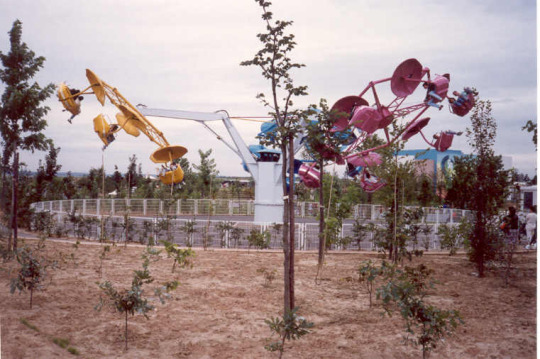
8 ) Le sommet de la grande frousse (The top of great fear / The summit of big fright)
This was actually one of the first areas of the park, just west of the entrance. In fact, during the first year of the park it was called the "Entry zone" and grouped together with the park's entrance - before the entrance and this area were divided. Its main attraction was a roller-coaster called "the Miralooping", famed for being the French roller-coasters with the most loopings at the time. Some newspapers and advertisement also called this roller-coaster the "biggest roller-coaster of France", able to rival the biggest roller-coasters of Europe (though this was apparently not certain and put to doubt?).
There was also a troika-ride called "Le Tourbillon", and most importantly a train station called the "Mirapolis Express", with three trains leaving it to go around the park (with the second train station being located at the foot of the Gargantua statue). There was also a bike-shaped ride opened in 1990 called "Les Vélos drôles" (The funny bikes).

(This picture is not of the Mirapolis park, it is the Saint Paul park - but the white swans you can see were originally those of Mirapolis)
And before leaving you for now, I will share another weird trivia about this weird park. The official logo and symbol of the park was this:

But on all the merch the park sold (such as official Mirapolis clothes), a different logo and symbol was used, and it looked like this:
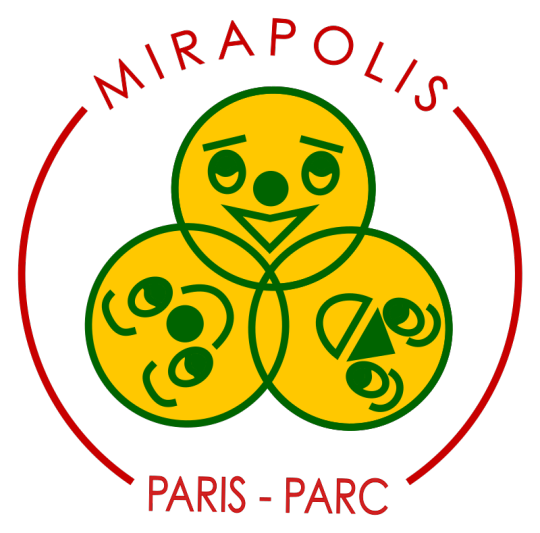
The idea was that the three faces would embody the three emotions guests were supposed to go through: surprise, joy and wonder.
#mirapolis#amusement park#defunct amusement park#urbex#french things#french history#french amusement park#french folklore#french fairytales#gargantua#clowns
14 notes
·
View notes
Photo

L'Artisan Parfumeur (Retail), par Hyphen Architects
#L'Artisan Parfumeur#Hyphen Architects#paris#france#parisian#travel#europe#lets go#i wish i were there right now
14 notes
·
View notes
Photo

LA DEF - La Défense sous la grisaille. . . . #architecturelovers#architectureporn#archiporn#architect#archilovers_paris#ig_france#paris#parismaville#parisian#topparisphoto#huntgramarchitecture#huntgram#photo#photography#photographer#architecturephotography#photooftheday#lightroom#canon#eosr#archidaily#archigram#archilife#building#buildingphotography#tower #fuji #fujix20 #fujixseries #fujifeed @fujifilmfrance (à La Défense, France) https://www.instagram.com/p/Chm1n45r0xt/?igshid=NGJjMDIxMWI=
#architecturelovers#architectureporn#archiporn#architect#archilovers_paris#ig_france#paris#parismaville#parisian#topparisphoto#huntgramarchitecture#huntgram#photo#photography#photographer#architecturephotography#photooftheday#lightroom#canon#eosr#archidaily#archigram#archilife#building#buildingphotography#tower#fuji#fujix20#fujixseries#fujifeed
1 note
·
View note
Text
Excerpt:
In 1979, Iran underwent an Islamic Revolution that reversed decades of progress in economic development, women’s rights, education, health, and more. But why would a country that had taken such strides toward a promising future undergo a revolution? To understand this, it's important to recognize that the so-called Islamic Revolution in Iran was not purely Islamic — it was initiated by leftists and executed by both leftists and Islamists.
Many Mullahs, including Ayatollah Khomeini, grew increasingly enraged with Iran's rulers, Reza Shah and his son Mohammad Reza Shah (the last of the Pahlavi royal dynasty) due to their progressive reforms concerning women's rights. These reforms, perceived as Westernized and contrary to Islamic values, were instrumental in inflaming the discontent that fueled the Islamic Revolution. However, the Mullahs themselves lacked the political skills necessary to instigate a revolution on their own.
In the years leading up to the revolution, Iranian leftists, deeply influenced by revolutionary communist theories and literature, were also growing restless and impatient. Lacking the means to mobilize a people’s revolution independently, these leftists found allies in the Islamic clerical establishment. The mullahs, with their extensive network in mosques and influence over the populace, provided the perfect machinery for an uprising. Together, they were powerful enough to overthrow the system.
...
A key architect in building the ideological framework for the Islamic Revolution was the Iranian sociologist Ali Shariati. Influenced by his time among Parisian radicals in the 1960s, he sought to reinterpret Islam with a strong emphasis on social justice and anti-imperialism by incorporating elements of revolutionary Marxism. He aimed to synthesize these schools of thought to mobilize the Muslim masses (especially the youth) against imperialism, and to promote social change within an Islamic framework. His Islamic-left ideology was the single most influential doctrine that led to the 1979 revolution.
The revolution succeeded. The Pahlavi shahs were deposed and the Ayatollah Khomeini emerged as the leader of Iran. It didn’t take long after the success of the revolution, however, for leftist ideals to be jettisoned.
...
In 1988, the Islamic Republic began coordinating extrajudicial mass executions of political prisoners, including the Tudeh Party and members and supporters of other leftist political groups. The main target of the killings was the People's Mojahedin Organization of Iran, also known as Mojahedin-e-Khalq (MEK), a militant leftist group. Khomeini issued an order for their execution referring to them as "moharebs" (those who war against Allah) and "mortads" (apostates from Islam), using their alleged non-Islamist beliefs and actions as a justification.
...
Iran today ranks among the least free countries in the world. LGBT people have virtually no rights. Same-sex behavior between gay and bi men is a crime that carries a maximum penalty of death. Indeed, thousands of LGBT people have been executed by the Iranian regime since the 1979 Revolution. Women who refuse to wear the hijab risk brutal attacks, imprisonment, or even death, as the much-publicized case of Mahsa Jina Amini showed. And political and religious minorities live as second-class citizens or worse. How might things have turned out if the progress prior to the revolution had been allowed to continue?
The trends, behaviors, and beliefs that led to the disastrous Iranian Revolution threaten to repeat themselves today in the West. We have already begun to see early glimpses. The most prominent example is the ongoing wave of mass anti-Israel and/or pro-Hamas protests following the Oct 7th attacks. Not only has Hamas been a disaster for women, LGBT people, and their own civilians, but the Palestinian “one state” solution would result in a country as unfree as Iran — and one equally antithetical to left-aligned values. Other warning signs include the case of Hamtramck, Michigan, where a progressive-backed Muslim-majority town council voted to ban Pride flags, or the spate of young TikTokers siding with Osama bin Laden’s 21-year-old “Letter to America.” This goes beyond Islamism. Segments of the far-left and Christian far-right are more than willing to team up, as we’ve seen in recent years with European populist movements, the opposition to defending Ukraine from Russian conquest, and radical lefties voting for Donald Trump to “let the empire burn.” The question is: why?
There is a particular strain within leftist thought that often exhibits a fascination with revolution and a drive to dismantle and disrupt, sometimes indiscriminately. Young (and some not-so-young) radicals see the problems that exist today, and with no appreciation for how far we’ve come, pronounce society to be irredeemably flawed. The only solution is to tear it all down. Whatever rises from the ashes, this dubious logic goes, cannot help but be better than the status quo. This perspective, while rooted in a desire for human betterment, usually leads to the precise opposite. Such revolutionary zeal is not just a desire for change, but an impulse to break the existing order, often “by any means necessary”, as so many recent anti-Israel protest signs can attest. This includes allying with any group or ideology that opposes the current power structures. This “enemy of my enemy is my friend” approach leads to alliances that are, at best, ideologically inconsistent, and at worst, counterproductive to the values that many leftists traditionally uphold.
In their pursuit of anti-establishment goals, many leftist factions find common ground with Islamist movements, not because of shared values, but because of a shared opposition to perceived imperialist or colonialist forces. The fact that Islamic fundamentalists oppose women’s rights, secular governance, and basic freedoms; the fact that they criminalize homosexuality and bisexuality in every society they control, is willfully overlooked by the far-left in the pursuit of a common adversary. But the blanket romanticizing of perceived underdogs, often without a critical assessment of their values or intentions, risks empowering forces that, given requisite power, could establish regimes far more oppressive than those they replace. In their quest for a radical overhaul, they’re willing to discard tangible progress in the pursuit of an idealized, hypothetical future. In Iran, decades of progress in economic development and women’s rights were thrown away in the revolution. The West today, which is so much further along, has even more to lose.
#israel palestine conflict#strange bedfellows#iran revolution#history repeats itself#not so progressive#woke madness#israel hamas conflict#leftist antisemitism
10 notes
·
View notes